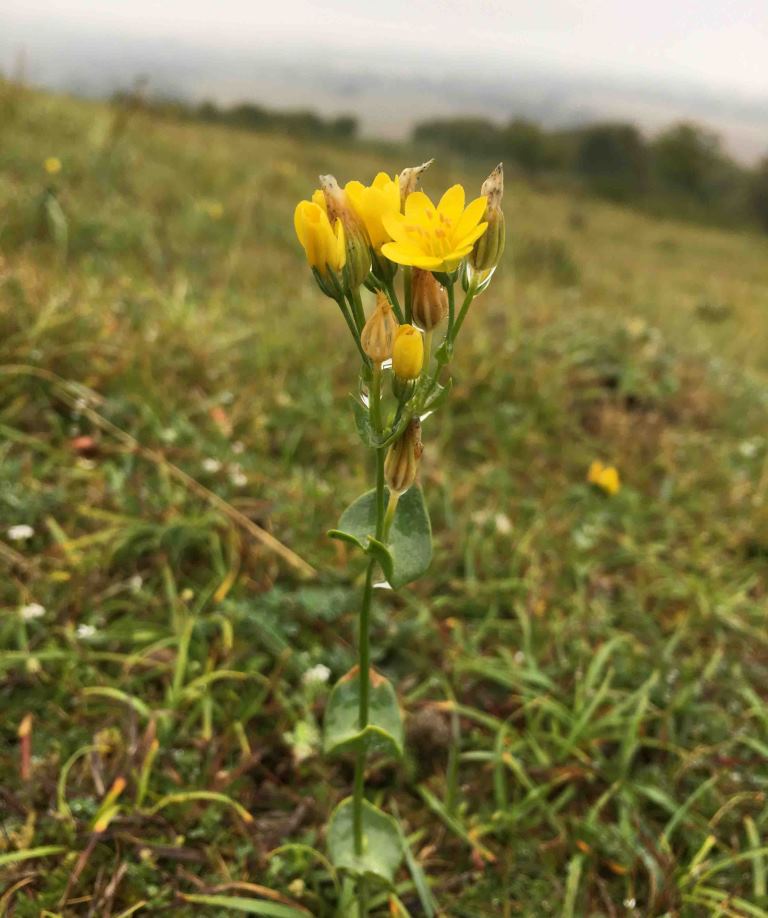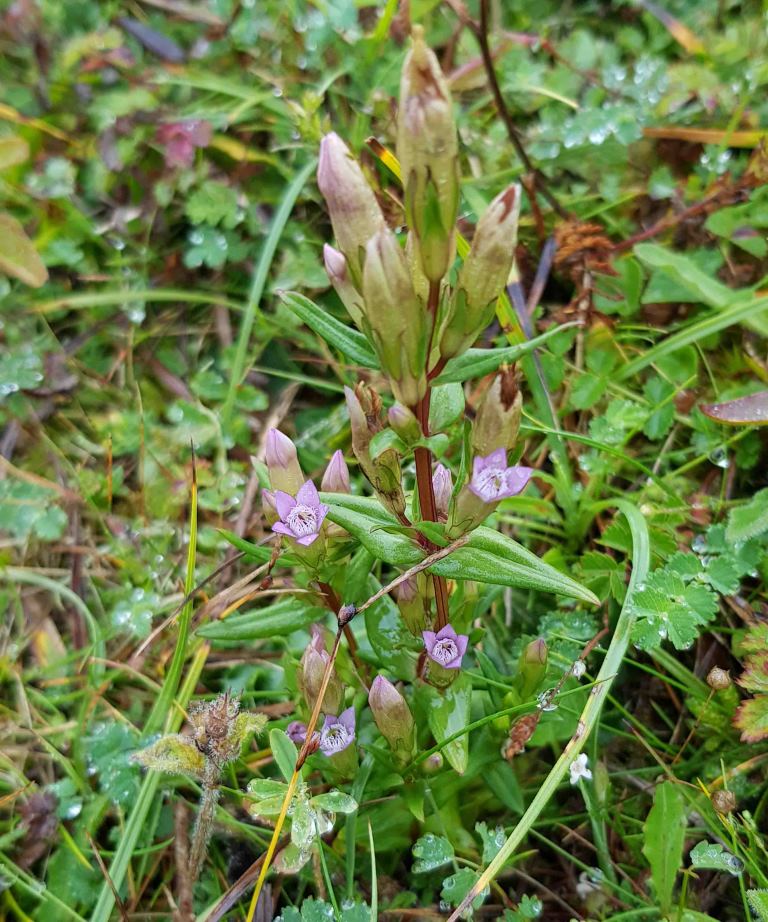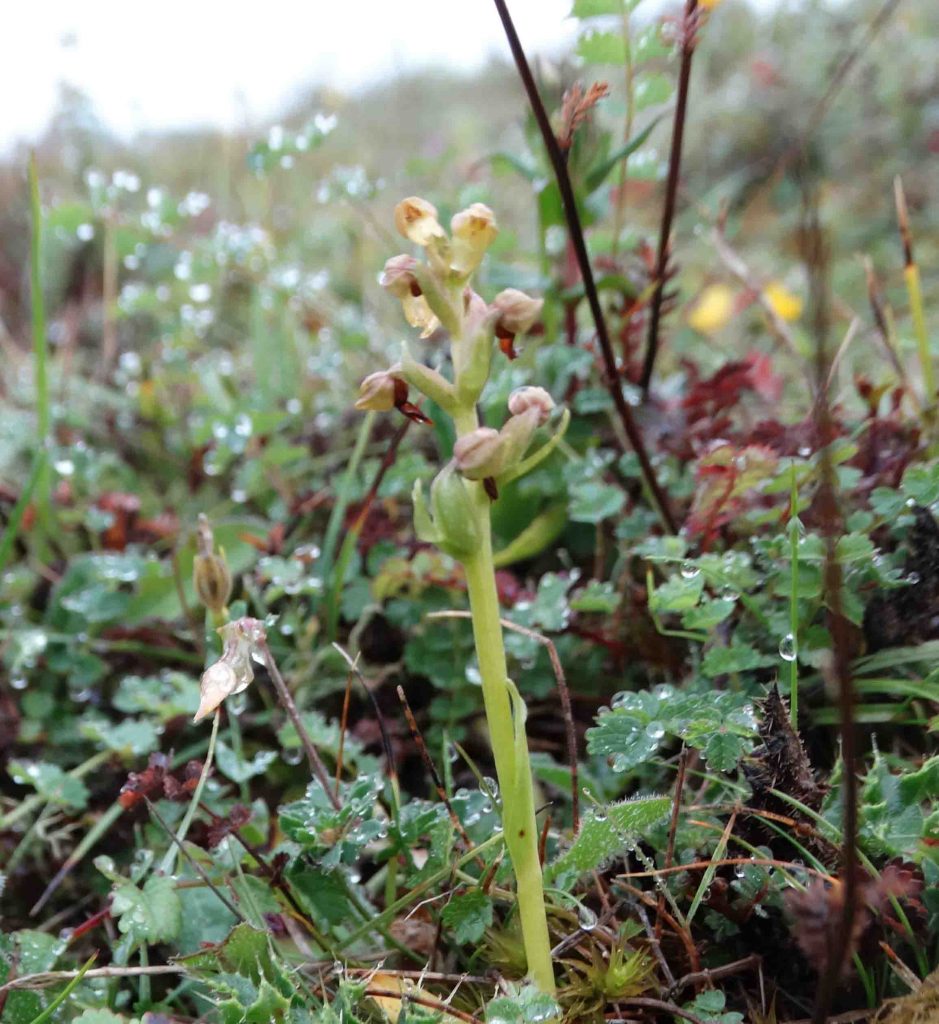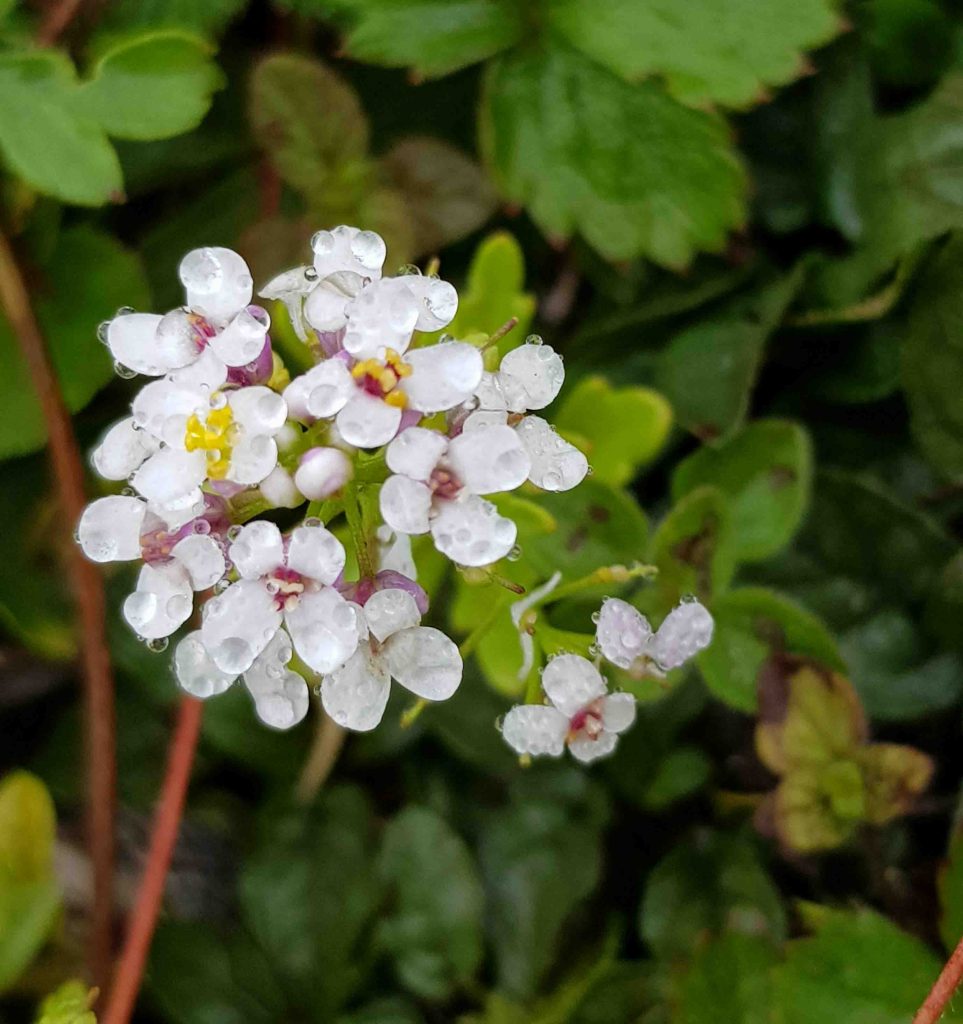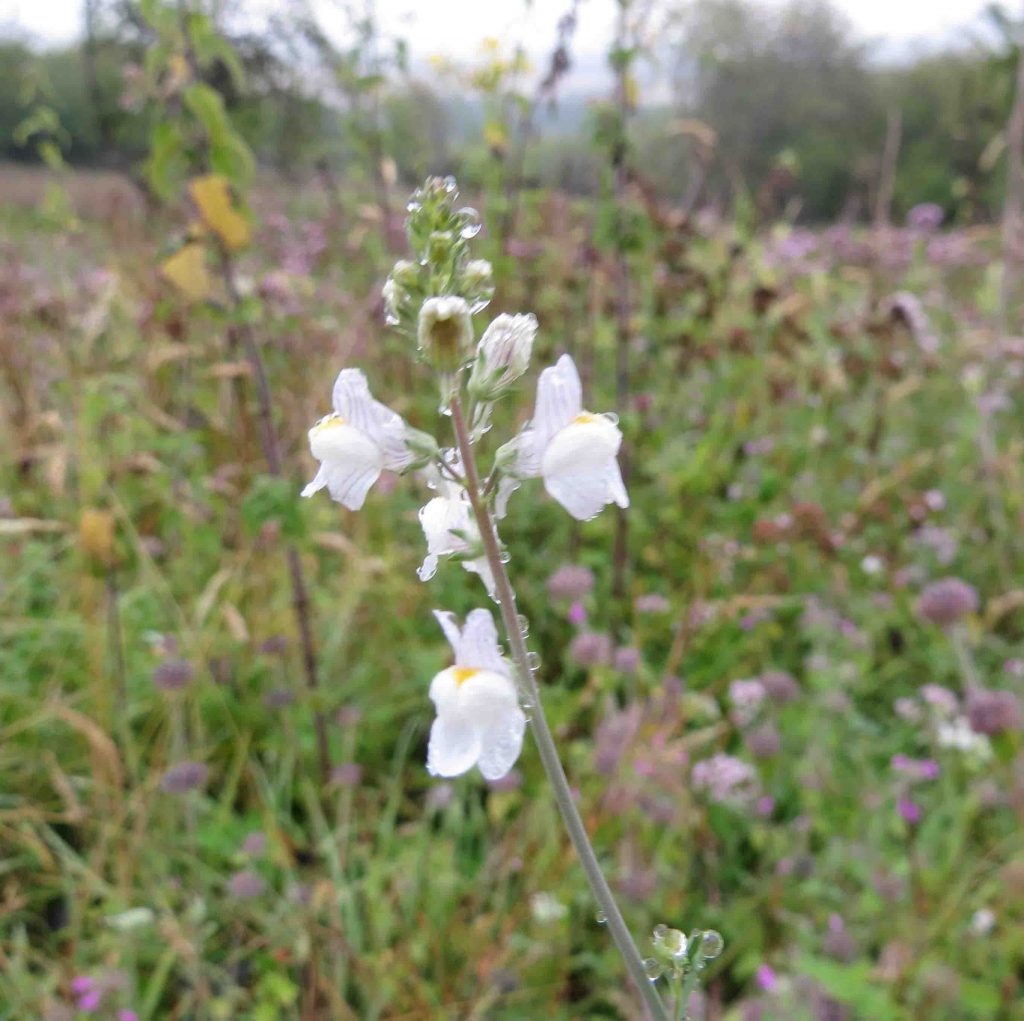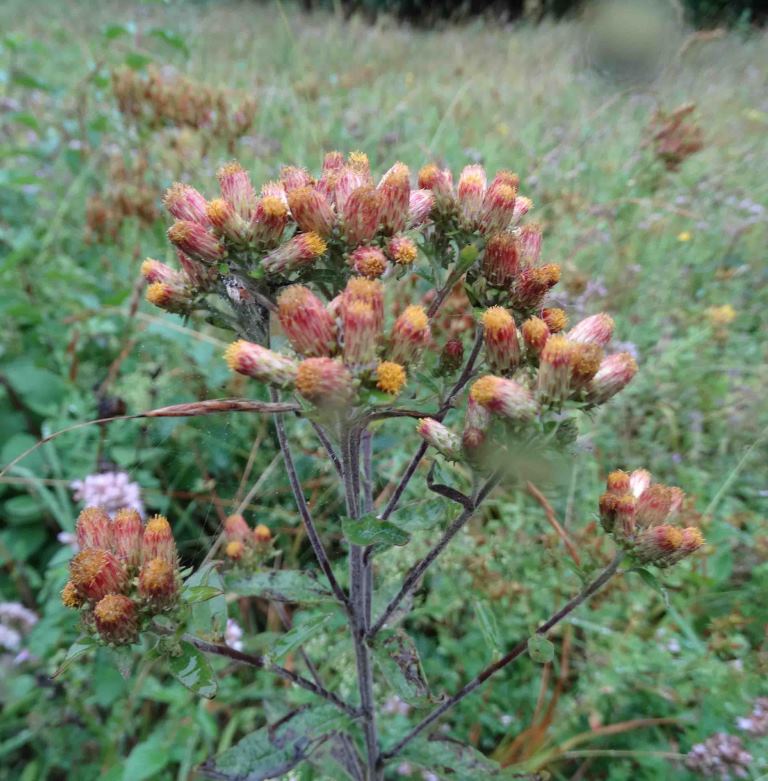Fiona Brown organised a walk at the National Trust’s Watlington Hill on the morning of Saturday 15 August. Fiona is a member of the Friends of Watlington Hill, who help regularly with conservation work at the site. When the pre-walk took place a week earlier, the temperature was in the high twenties, Silver-spotted Skipper and Chalk Hill Blue butterflies were seen in good numbers and the view from the hill stretched across a significant portion of Oxfordshire and over to the Berkshire Downs. On the morning of the walk, the temperature was ten degrees lower, light drizzle alternated with heavier bursts of rain, the rare butterflies were sheltering out of sight and the view barely stretched beyond the town of Watlington at the foot of the hill. Nevertheless, the participants had a productive morning exploring the hillside.
The walkers were split into two groups, with Fiona leading the first group and Jan Haseler following half an hour later with the second group. The walk started from the National Trust car park at the top of the hill and headed out though a small sheltered meadow area where flowers included Corn Mint and Red Bartsia. The main reserve access road led westwards towards the open hillside. Vervain, Perforate St John’s-wort, Wild Basil and Wild Marjoram were in flower beside the track and a Crab Apple tree had a prolific crop of small, sharp-tasting fruit. The route led out onto rich flowery chalk grassland on the north-facing slope of the hillside. It was interesting to see what was present and what was missing, compared with similar habitat seen two weeks earlier at Aston Rowant National Nature Reserve. One big difference between the two sites is that Aston Rowant is grazed for part of the year by sheep, while Watlington relies on rabbits for grazing, together with brush cutting and raking to keep the scrub under control. Flowers seen at the top of the hill included Field and Small Scabious, Greater and Common Knapweed, Wild Thyme, Yellow Rattle, Dwarf Thistle, Lady’s Bedstraw, Harebell, Eyebright, Yellow-wort and Common Centaury. Small patches of Gorse marked out areas of acid wind-blown sands on top of the chalk. In the next short turf area, Common Rock-rose, Hoary Plantain, Squinancywort, Blue Fleabane and Autumn Gentian were added to the list and a few tiny Frog Orchids were spotted by a sharp-eyed observer. Slim rose hips with glandular pedicels were later identified as Small-flowered Sweet-briar. Meadow Browns and a Small Heath butterfly were disturbed from the vegetation, a Common Blue was roosting in the grass and three Ravens and a small flock of House Martins were seen.
Continuing westwards along the ridge, an area to the side of the path which had recently been cut and raked, had plentiful Wild Candytuft, a plant which had not been seen at Aston Rowant. Pale Toadflax, Bladder Campion, Wild Mignonette and Common Gromwell were found nearby. A short diversion led down the slope to the Watlington White Mark. This is a 270 foot high spire-shaped triangular mark in the chalk which was excavated for the local squire in 1764. He thought that the view from his home across the parish church to Watlington Hill would be more impressive if the church had a spire. A former National Trust Ranger was able to refresh the spire using a load of chalk from a new road cutting and volunteers now look after it to keep it white. The walk continued along the west-facing slope. The sheltered stretch below a line of trees had good quantities of Clustered Bellflower. This had been one of the best sections for Chalk Hill Blue on the pre-walk. The path then led into a dark area of Yew woodland, before crossing a sunken drove road and emerging towards the bottom of the south-facing side of the hill. The final part of the walk was a long slow climb back up the hill. Several enclosures had been constructed beside the path to protect the Horseshoe Vetch, the caterpillar food-plant of the Chalk Hill and Adonis Blue butterflies. Hawkweed Oxtongue was spotted in one of these enclosures and Ploughman’s-spikenard was in flower nearby. Several tiny Brown Argus butterflies were roosting on the grass beside the track. Sanicle was found in the final stretch of woodland before returning to the cars.
Pictures by Sarah White, Fiona Brown and Laurie Haseler

